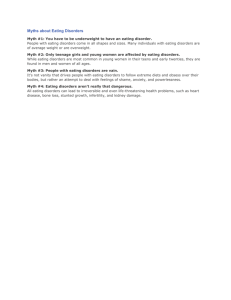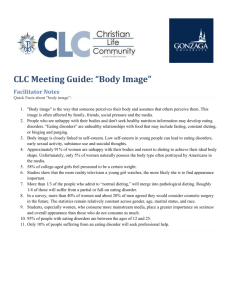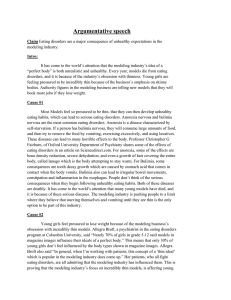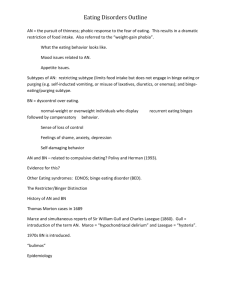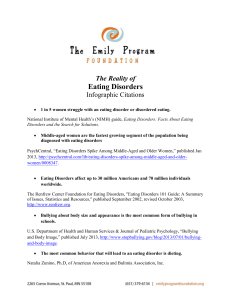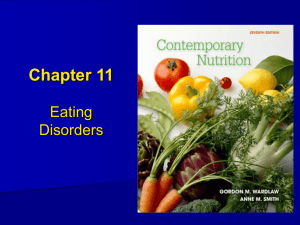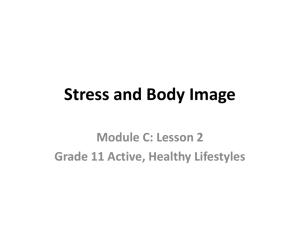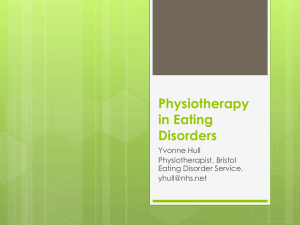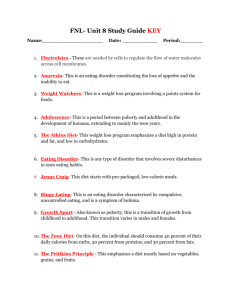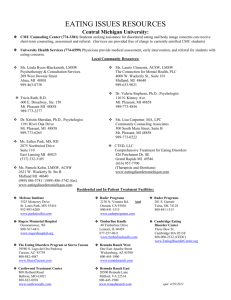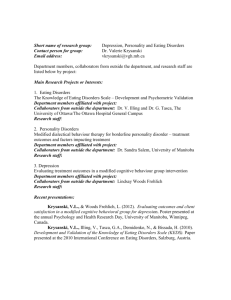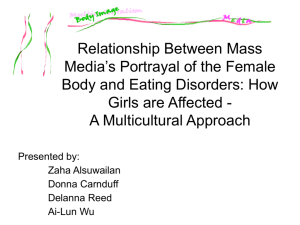Eating Disorders in Teenage Girls
advertisement
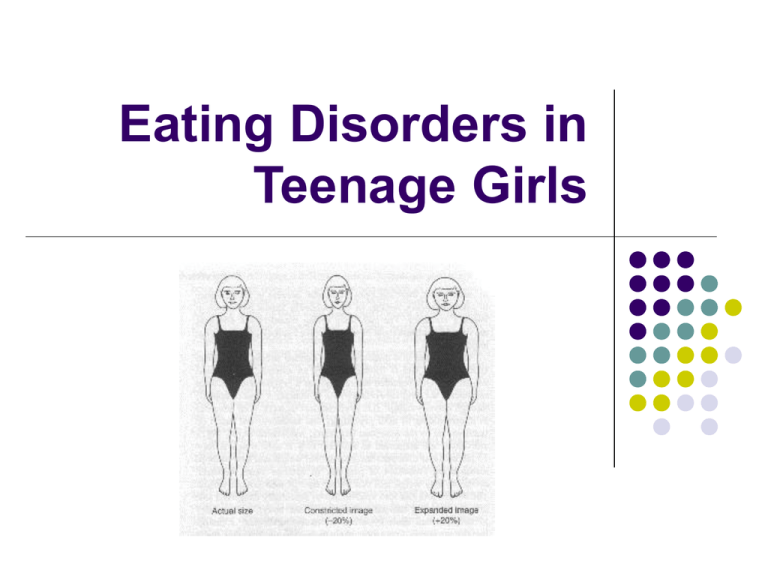
Eating Disorders in Teenage Girls Why individuals resort to eating disorders? A lot of people usually think that girls become anorexic because they are self-absorbed individuals, who place too much importance on their looks. The culture in which we live in today places a huge emphasis on thinness. Even though this is a big factor in why girls would tend to become anorexic it is not the sole factor. There is no sole factor. There are many factors such as; social, family, psychological, and cultural. Most times girls become anorexic because there perfectionists at everything they do and want to have control over one thing in there life. Food and weight can be controlled by an individual while other aspects in their life cannot. Body Image Is how an individual sees themselves when they look in the mirror or picture themselves in their minds. Aspects of Negative Body Image - A distorted perception of your shape, you perceive parts of your body unlike they really are. - You are convinced that only other people are attractive and that your body size or shape is a sign of personal failure. - You feel ashamed, self-conscious, and anxious about your body. -You feel uncomfortable and awkward in your body. Symptoms of Anorexia has lost a great deal of weight in a short period of time continues to diet, although bone-thin. reaches diet goal and immediately sets another goal for further weight loss remains dissatisfied with appearance, claiming to feel fat, even after reaching weight-loss goal prefers dieting in isolation to joining a diet group loses monthly menstrual periods develops an unusual interest in food develops strange eating rituals and eats small amounts of food, e.g., cuts food into tiny pieces or measures everything before eating into extremely small amounts becomes a secret eater becomes obsessive about exercising appears depressed much of the time begins to binge and purge Symptoms of Bulimia binges regularly (eats large amounts of food over a short period of time) and purges regularly (forces vomiting and/or uses drugs to stimulate vomiting, bowel movements or urination) diets and exercises often, but maintains or regains weight becomes a secret eater eats enormous amounts of food at one sitting, but does not gain weight disappears into the bathroom for long periods of time to induce vomiting abuses drugs or alcohol, or steals regularly appears depressed much of the time has swollen neck glands has scars on the back of hands from forced vomiting Statistics 90% of those who have eating disorders are women between the ages of 12 and 25 In a study of girls aged 9 to 15, slightly more than half reported exercising to lose weight, slightly less than half reported eating less to lose weight, and approximately 1 out of 20 reported using diet pills or laxatives to lose weight Bulimia affects 1 to 3 percent of middle and high school girls. Pictures Conclusion One important thing to remember is eating disorders are not like any other disorders in today’s world. There is not one set individual that can be diagnosed with an eating disorder. We are all at risk. There are many ways to get treatment. There is getting treatment in the hospital, psychological treatment, and group meetings (where you meet with others that have the same problem)




